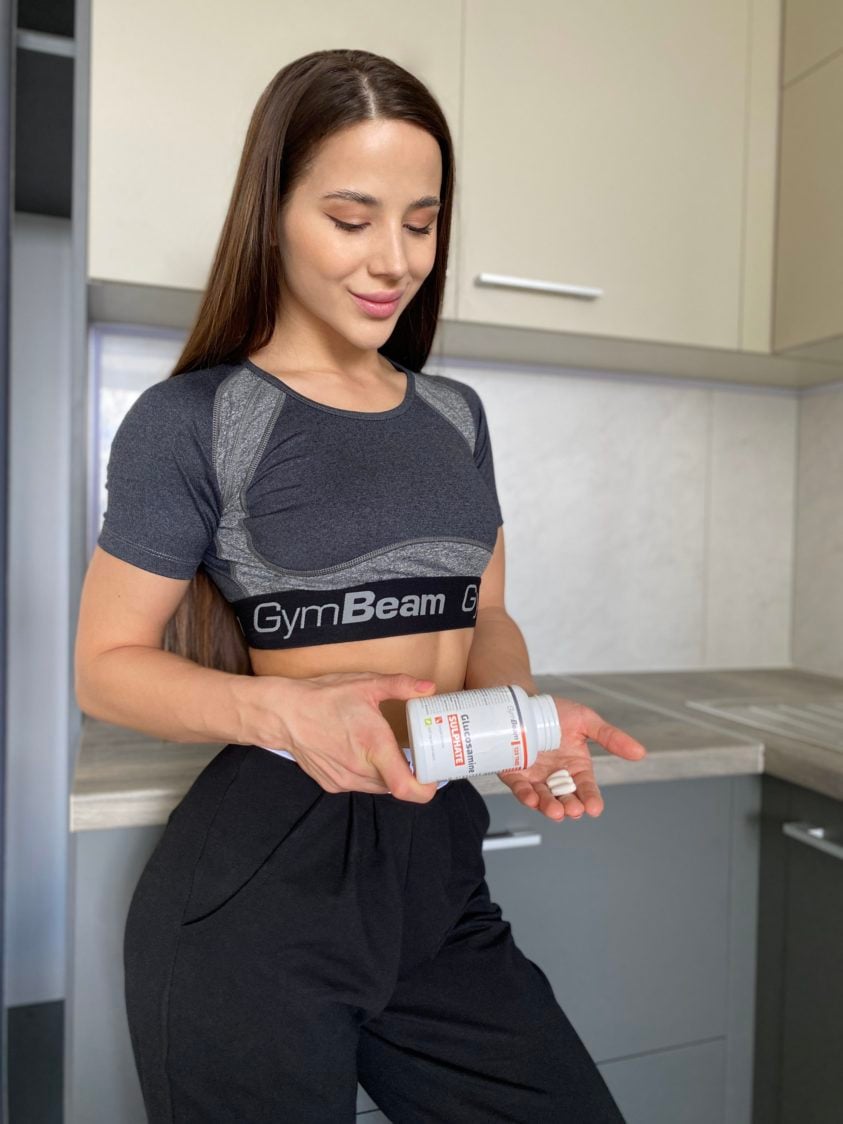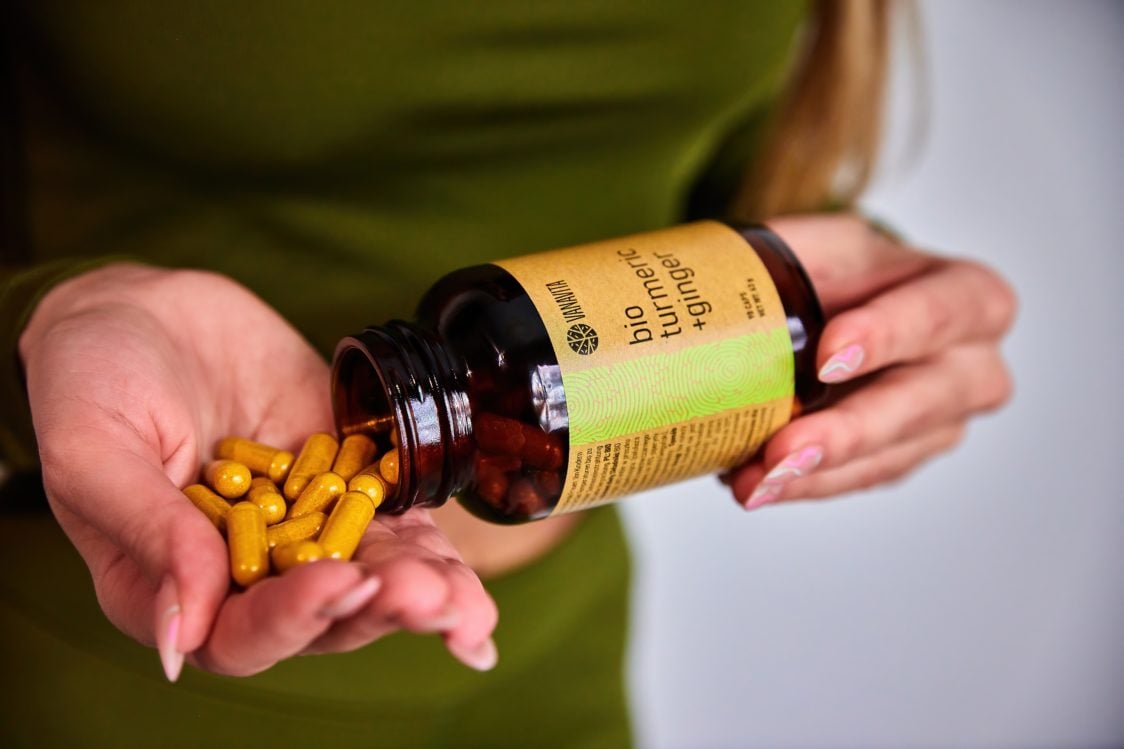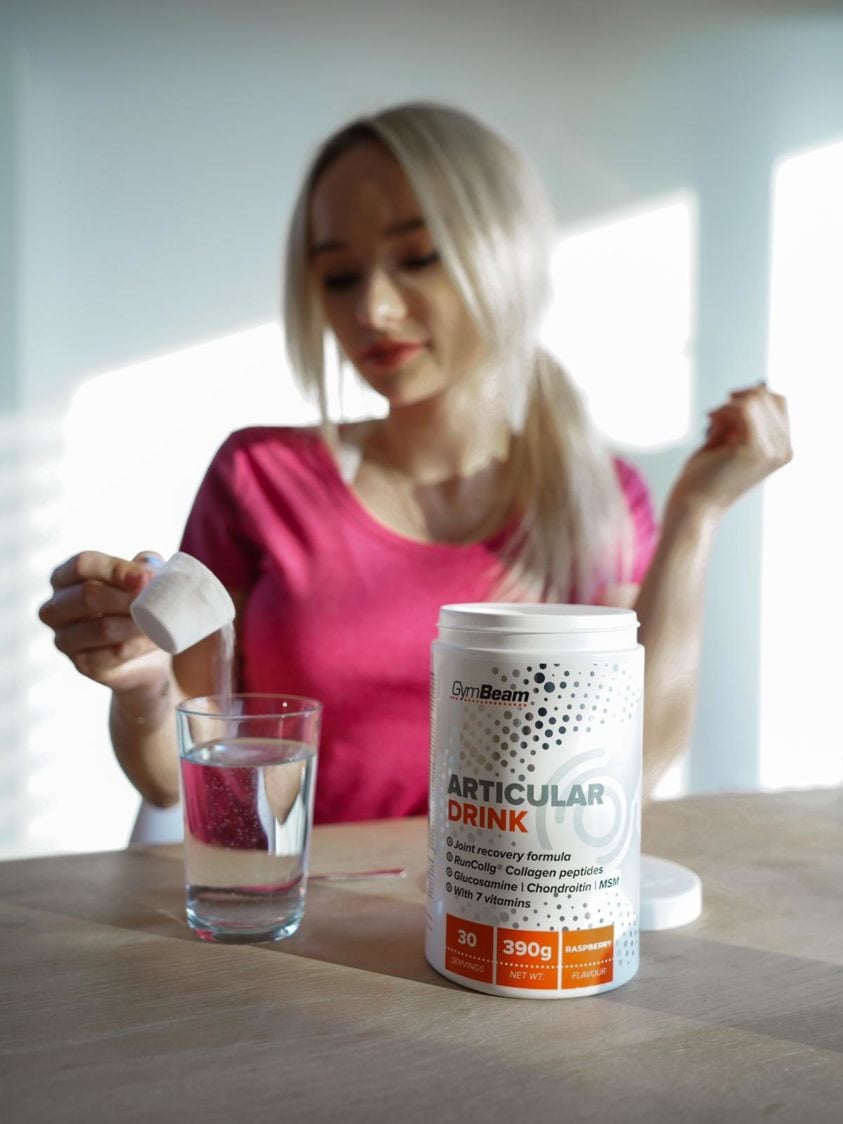Table of Contents
If you exercise regularly or have a physically demanding job, you may have been considering buying some joint nutrition supplement for maximum musculoskeletal support. This kind of supplement is particularly beneficial for the elderly, who often have difficulty moving, and all people with increased physical activity.
The substances that are contained in joint supplements support the proper function of the joints. In the event of an injury, they help speed up the healing process of damaged tissues and return to daily activities and sports. There are plenty of ingredients on the market that promise these effects. Therefore, it may be a bit more difficult to choose the right product to meet your expectations.
In today’s article, we will advise you on which substances should not be missing in complex joint nutrition supplements. In addition, you will learn what is behind their effects and how to figure out the ideal dosage.
What are the most common causes of joint pain or stiffness?
Sports injuries, inflammation (arthritis) and loss of functional mass (such as cartilage in osteoarthritis) are the most common causes of joint damage. If the joints don’t work properly, the body lets us know through unpleasant pain, stiffness and other problems in daily activities. The treatment of joints then depends on the type and level of damage and often requires comprehensive cooperation with a number of experts (orthopedist, physiotherapist) who can design an individual plan tailored to a specific person. [1]
Joint nutrition supplements are then often used to support the treatment. In addition, it is also a common part of comprehensive health care for the musculoskeletal system, especially with increased physical activity. It complements healthy diet, regular exercise and sufficient rest. All this contributes to good joint function, painless training and managing normal daily activities from getting up in the morning to going to bed. [2]

Who should consider using joint nutrition supplements?
Joint nutrition supplements can help people who are overweight or have already experienced problems with movement. Let’s divide people who should consider using such supplements into several groups.
- Athletes: Sometimes they train several times a day, put intense strain on the joints and have a higher risk of injuries of the musculoskeletal system.
- People with physically demanding work or using one side of the body: These are, for example, construction workers, warehouse workers and other manual workers. They often have to carry heavy objects at work, be constantly on the move or on their feet.
- Elderly: Many diseases of the musculoskeletal system, such as arthritis or osteoarthritis, are associated with ageing.
- People who are overweight or obese: The joints, especially the hips and knees, are exposed to a greater load caused by extra pounds. This results in increased risk of injury or disease of the musculoskeletal system.
- People with genetic predispositions for the development of joint diseases. [3–4]
3 most effective ingredients of complex joint nutrition supplements
Glucosamine sulphate, chondroitin sulphate and MSM belong to the most researched substances that should definitely not be missing in any quality and complex joint supplement. The effectiveness of these substances is also confirmed by studies with people suffering from osteoarthritis.
The damage or erosion of the articular cartilage is typical for osteoarthritis and is manifested by pain, swelling, joint stiffness, and general difficulty when moving around. These symptoms are also common for a number of other joint problems, and therefore the results of the studies can theoretically be applied to them as well.
1. Glucosamine sulphate
Glucosamine sulphate rightly belongs among the most popular components of joint nutrition. In the body, it produces important compounds (glycosaminoglycans, glycoproteins), which serve as a building material for the formation of cartilage and other parts of the musculoskeletal system. According to studies, glucosamine use reduces collagen degradation and the symptoms of osteoarthritis. [5–7]

What are the effects of glucosamine sulphate?
Glucosamine is most often associated with the support of the resistance and strength of knee joints. According to studies, it can slow down the degradation of cartilage, which can then cause better joint function. It can also help relieve the pain and stiffness. [10]
- According to a study conducted on football and rugby players, it can slow down the gradual erosion of cartilage (type 2 collagen). This is important for joint health because it contributes to the strength of the articular surface and durability of articular cartilage. [7]
- In patients with knee osteoarthritis, the intake of 1500 mg of glucosamine daily reduced the pain in knee joints. [8]
- According to an analysis of 13 studies, glucosamine may have a positive effect on joint stiffness. [9]
What is the recommended dosage of glucosamine sulphate?
Commonly recommended dose of glucosamine is 900-1,500 mg in 1-3 servings.
Athletes who engage in activities with a high impact on their joints (running, team sports) can increase the intake up to 3000 mg per day. Long-term use helps achieve the maximum effects. [10]
You might be interested in these products:
2. Chondroitin sulphate
Chondroitin has similar effects as glucosamine. It is one of the main building blocks of articular cartilage that largely contributes to its resilience. It also supports the production of proteoglycans and hyaluronic acid, which are also important for its proper function. In addition, like glucosamine, it helps to slow down its erosion. [11–12]
What are the effects of chondroitin sulphate?
Thanks to its properties, chondroitin has a promising potential to keep cartilage healthy, elastic, durable, and thus reduce joint pain. [14]
- Analysis of the results of studies dealing with chondroitin confirmed its positive effect on reducing joint pain. [9]
- The results of another study suggest that the use of chondroitin may lead to lower consumption of pain and inflammation drugs in people with osteoarthritis. [13]
What is the recommended dosage of chondroitin sulphate?
It is usually taken in an amount of 800-1200 mg per day in 3 separate servings, each consumed with a meal. The effect is often observed only after long-term use, up to several months. Shark cartilage is also a good source of chondroitin. [14]

3. MSM (Methylsulfonylmethane)
MSM is a natural substance for the body, which is also commonly found in some fruits, vegetables and meat. It is a source of organic sulphur, which is part of the joint and bone mass. In addition, MSM can suppress the activity of inflammatory cells that appear when tissue is damaged or infected. In addition, it acts as an antioxidant, which helps protect cells from oxidative stress. Thanks to its mechanism of action, MSM is one of the basic components of quality joint nutrition supplements. [15–16]
What are the effects of MSM?
MSM is most often associated with supporting joint function and reducing pain.
- According to the results of studies, MSM can improve the range of motion of the joints as well as the proper function of the musculoskeletal system in people with osteoarthritis. [16]
- In one study, patients with osteoarthritis who received 3375 mg of MSM daily for 12 weeks observed a 21% reduction in joint pain. [17]
What is the recommended dosage of MSM?
For maximum effect, a daily dose of 3000 mg is recommended. It should be used for at least several months. [18]
The effect of a combination of glucosamine, chondroitin and MSM
These 3 substances provide cartilage with a basic building material. They help keep it in good condition and slow down the natural degradation that usually increases with age. The effects of glucosamine, chondroitin and MSM complement each other, making them a great basis for complex joint supplement. [19–21]
The use of glucosamine, chondroitin, MSM and various combinations of these substances is regularly addressed by researchers who study their effects on relieving joint pain.
- Chondroitin and glucosamine have similar properties. According to some studies, the effects of these substances can even increase when used together.
- A study compared the effect of a combination of MSM (500 mg), glucosamine (1500 mg) and chondroitin (1200 mg). This combination reduced pain better than just glucosamine and chondroitin. [23]
- Participants in other scientific studies also observed positive effects when using a combination of these 3 substances (1500 mg glucosamine, 1200 mg chondroitin and 750 mg MSM). After 12 weeks, they reported a reduction in knee pain of almost 40%. [19]

6 active ingredients for healthy joints
In addition to the basic substances we already mentioned, there are other common ingredients of complex joint nutrition supplements. Some of them have an anti-inflammatory effect and help improve joints function. It is important to mention that these substances can maximize the potential effects of the resulting blend. So, what substances should you pay attention to?
1. Collagen type 1 and 2
Collagen is a protein found in the connective tissues that serves as the building block of different parts of the body. In bones, tendons and ligaments you can find mainly type 1 collagen. On the other hand, joints contain mostly type 2 collagen. Both types are thus important for the proper functioning of the musculoskeletal system. In particular, collagen supports the elasticity and strength of tissues. It acts as a shock absorber that helps bones and joints cope with the shock caused by walking, running, jumping or other impacts. However, with age, the amount of collagen in the body naturally decreases. Dietary supplements can help with its optimal amount in the body. [24–25]
What are the effects of type 1 and type 2 collagen?
Type 1 and type 2 collagen help reduce joint pain and improve range of motion in people with osteoporosis or athletes.
- According to the study, taking 10 g of type 1 collagen for 6 months can help reduce joint pain.
- For type 2 collagen, a smaller daily dose is recommended.
- According to another scientific work, the use of 40 mg of type 2 collagen for 4 months led to a reduction in joint pain and improved range of motion when exercising. This type is also associated with anti-inflammatory effects. It can activate immune cells that fight inflammation and contribute, for example, to the repair of damaged cartilage. [25–26]
What is the recommended dosage of type 1 and type 2 collagen?
- The recommended intake of type 1 collagen in the form of hydrolysed collagen is 10 g per day.
- As to type 2 collagen, the recommended amount is 40 mg per day.
- Long-term use is suitable for both types of collagen. [27]
To learn more about collagen, read our article What Type of Collagen Is Best for Joints?

2. Vitamin C
Vitamin C supports immunity, we all know that, but it also plays an important role in the proper functioning of the musculoskeletal system. First of all, it has antioxidant effects, which help protect cartilage-forming cells from the harmful effects of free radicals. In addition, it is significant for optimal collagen production. For this reason, it is commonly found in joint nutrition along with collagen. You get the building material itself and also the substance that supports its natural production. [28]
What are the effects of vitamin C?
According to studies, a sufficient intake of vitamin C has an anti-inflammatory effect and helps maintain proper joint function. [29]
What is the recommended daily dose of vitamin C?
The recommended daily dose of vitamin C is around 60-200 mg per day. Although some studies mention doses up to 2000 mg. [30]
3. Omega 3 fatty acids
Omega 3 fatty acids or healthy fats, which include EPA (Eicosapentaenoic acid) and DHA (Docosahexaenoic acid) are known for their beneficial effects on eyesight, heart and immunity. Furthermore, omega 3 can also support joint health. It can alleviate inflammation, which causes unpleasant pain and swelling of the joints. [31–32]
What are the effects of omega 3 fatty acids?
According to an analysis of studies, omega 3 fatty acid supplementation is associated with lower intensity of joint pain and better mobility. [31–32]
What is the recommended dose of omega 3 fatty acids?
It is typically recommended to take at least 250 mg of EPA and DHA per day. Some health organisations, such as the American Heart Association, recommend increasing this dose to 1 g per day. In some studies, about 3000 g of EPA and DHA were used. [32]

4. Boswellia serrata
Indian frankincense extract (Boswellia serrata) can also have a positive effect on joint health. Its effects are mainly due to boswellic acid, which has anti-inflammatory properties.
What are the effects of boswellia serrata?
The use of Boswellia serrata is most often associated with reducing joint pain and promoting joint mobility. [33–34]
What is a recommended Boswellia serrata dosage?
Boswellia serrata is most often used in the range of 800-1800 mg, 3 times a day. This will give you the optimal dose of 2400-5400 mg. Boswellia is recommended to be used for a long time, gradually increasing the total daily dose. [33–34]
5. Curcumin
Curcumin is a component of turmeric that gives it yellow colour. It also has a number of beneficial effects for your joints. It is one of the most commonly known antioxidants, and even some anti-inflammatory effects have been observed. Curcumin itself has very low usability. Therefore, black pepper (piperine) is commonly added to dietary supplements alongside with curcumin, which promotes its absorption in the body. [35–36]
What are the effects of curcumin?
According to what we know, curcumin contributes to pain reduction in patients with osteoarthritis. [35–36]
- In one study, people with joint diseases reported pain reduction after taking 1000 mg of curcumin.
- In another study, the researchers compared the effects of classic painkillers and curcumin. Participants of the study received 500 mg of curcumin three times daily. In both groups, participants with osteoarthritis observed an improvement in their condition of at least 50%. However, they had fewer side effects with curcumin. [35–36]
What is the recommended dosage of curcumin?
According to studies, the recommended amount of curcumin is 500 mg, 1-3 times a day. [37]

6. Hyaluronic acid
Hyaluronic acid is a substance that occurs naturally in eyes, skin and joints. Its main function is to keep fluids inside the cells. As a result, it acts as a natural lubricant that helps prevent friction of the joint heads in the joints. However, with age, its amount in the body naturally decreases, and therefore its supplementation will pay off. [38–39]
What are the effects of hyaluronic acid?
According to current studies, the use of hyaluronic acid can reduce joint pain and improve mobility. [38–39]
Recommended dosage of hyaluronic acid
Most studies mention doses in the range of 80-250 mg of hyaluronic acid each day. [39]
How to choose the best joint supplements and how to combine them?
When choosing a complex joint nutrition, focus on its ingredients list. It should contain glucosamine, chondroitin and MSM.

A nice bonus would be if the joint supplement contains ingredients such as vitamin C and collagen. If the supplement you have bought does not contain these ingredients, it’s not a problem. Simply take them separately.
Another way to do the maximum for joint health is to combine several products.
- Start with a combination of 1,500 mg glucosamine, 1,200 mg chondroitin and 3,000 mg MSM, which, according to studies, has worked best in relieving joint pain and stiffness. These symptoms often occur in the morning after waking up or after a long period of sitting down.
- You can support cartilage elasticity by taking 10 g of hydrolysed collagen or 40 mg of type 2 collagen with vitamin C.
- Supplements with omega 3 fatty acids, curcumin or Boswellia serrata extract will increase the anti-inflammatory effect of joint nutrition supplements.
- Taking 80-250 mg of hyaluronic acid will contribute to better joint lubrication.
The joint supplements should be used every day for several months or years to achieve the desired effects. Something different can work for each of you, so don’t be afraid to try different types of these supplements. [40]
What should you remember?
Athletes, the elderly and also individuals who have to perform physically demanding work can take advantage of the beneficial effects of complex joint supplements. For example, it can help relieve pain and improve joint mobility. However, when choosing the right joint supplement, it is important to know the basic principles. It should contain glucosamine sulphate, chondroitin sulphate and MSM.
It is also worth adding some collagen and vitamin C supplements. The use of anti-inflammatory substances, such as omega 3 fatty acids and hyaluronic acid can then support the proper lubrication of the joints. We hope that after reading today’s article, you already know what a quality joint supplement should contain and how to combine it with other dietary supplements.
Do you know anyone with joint problems? Share this article to help them choose the right joint supplement.
[1] Understanding Arthritis in Athletes. – https://www.osmifw.com/sports-medicine/understanding-arthritis-in-athletes/
[2] Sandmeier, R. H. Osteoarthritis and Exercise: Does Increased Activity Wear Out Joints? – https://www.ncbi.nlm.nih.gov/pmc/articles/PMC6220608/
[3] Examine.Com. Supplementing for better joint health. – https://examine.com/nutrition/supplementing-for-better-joint-health/
[4] CDC. Osteoarthritis (OA) | Arthritis. – https://www.cdc.gov/arthritis/basics/osteoarthritis.html
[5] ScienceDirect Topics. Glucosamine—An overview. – https://www.sciencedirect.com/topics/medicine-and-dentistry/glucosamine
[6] Uitterlinden, E., Koevoet, J., Verkoelen, C., Bierma-Zeinstra, S., Jahr, H., Weinans, H., Verhaar, J., & van Osch, G. Glucosamine increases hyaluronic acid production in human osteoarthritic synovium explants. – https://doi.org/10.1186/1471-2474-9-120
[7] Nagaoka, I., Tsuruta, A., & Yoshimura, M. Chondroprotective action of glucosamine, a chitosan monomer, on the joint health of athletes. – https://doi.org/10.1016/j.ijbiomac.2019.03.234
[8] Veronese, N., Demurtas, J., Smith, L., Reginster, J.-Y., Bruyère, O., Beaudart, C., Honvo, G., & Maggi, S. Glucosamine sulphate: An umbrella review of health outcomes. – https://doi.org/10.1177/1759720X20975927
[9] Zhu, X., Sang, L., Wu, D., Rong, J., & Jiang, L. Effectiveness and safety of glucosamine and chondroitin for the treatment of osteoarthritis: A meta-analysis of randomized controlled trials. – https://doi.org/10.1186/s13018-018-0871-5
[10] Frank, K., Patel, K., Lopez, G., & Willis, B. Glucosamine Research Analysis. – https://examine.com/supplements/glucosamine/
[11] Bertrand, J., & Held, A. Role of Proteoglycans in Osteoarthritis. – https://doi.org/10.1007/978-3-319-45803-8_4
[12] Martel-Pelletier, J., Kwan Tat, S., & Pelletier, J.-P. Effects of chondroitin sulfate in the pathophysiology of the osteoarthritic joint: A narrative review. – https://doi.org/10.1016/j.joca.2010.01.015
[13] Reginster, J.-Y., & Veronese, NHighly purified chondroitin sulfate: A literature review on clinical efficacy and pharmacoeconomic aspects in osteoarthritis treatment. – https://doi.org/10.1007/s40520-020-01643-8
[14] Frank, K., Patel, K., Lopez, G., & Willis, B. Chondroitin Research Analysis. – https://examine.com/supplements/chondroitin/
[15] Versus Arthritis. MSM . – https://www.versusarthritis.org/about-arthritis/complementary-and-alternative-treatments/types-of-complementary-treatments/msm/
[16] Butawan, M., Benjamin, R. L., & Bloomer, R. J. Methylsulfonylmethane: Applications and Safety of a Novel Dietary Supplement. – https://doi.org/10.3390/nu9030290
[17] Debbi, E. M., Agar, G., Fichman, G., Ziv, Y. B., Kardosh, R., Halperin, N., Elbaz, A., Beer, Y., & Debi, R. Efficacy of methylsulfonylmethane supplementation on osteoarthritis of the knee: A randomized controlled study. – https://doi.org/10.1186/1472-6882-11-50
[18] Frank, K., Patel, K., Lopez, G., & Willis, B. Methylsulfonylmethane Research Analysis. – https://examine.com/supplements/methylsulfonylmethane/
[19] Sobhani, A. M. (b.r.). Efficacy and Tolerability of Glucosamine-Chondroitin Sulphate Methyl Sulfonyl Methane (MSM) in Osteoarthritis of Knee in Indian Patients. 5. – http://www.bioline.org.br/pdf?pt04009
[20] Kirkpatrick, D. What Are the Benefits of Chondroitin Glucosamine MSM? – https://www.dallaswellnesscenter.com/2016/07/28/what-are-the-benefits-of-chondroitin-glucosamine-msm/
[21] Usha, P. R., & Naidu, M. U. R. Randomised, Double-Blind, Parallel, Placebo-Controlled Study of Oral Glucosamine, Methylsulfonylmethane and their Combination in Osteoarthritis. – https://doi.org/10.2165/00044011-200424060-00005
[22] Calamia, V., Mateos, J., Fernández-Puente, P., Lourido, L., Rocha, B., Fernández-Costa, C., Montell, E., Vergés, J., Ruiz-Romero, C., & Blanco, F. JA pharmacoproteomic study confirms the synergistic effect of chondroitin sulfate and glucosamine. – https://doi.org/10.1038/srep05069
[23] Lubis, A. M. T., Siagian, C., Wonggokusuma, E., Marsetyo, A. F., & Setyohadi, B. Comparison of Glucosamine-Chondroitin Sulfate with and without Methylsulfonylmethane in Grade I-II Knee Osteoarthritis: A Double Blind Randomized Controlled Trial. – https://pubmed.ncbi.nlm.nih.gov/28790224/
[24] Honvo, G., Lengelé, L., Charles, A., Reginster, J.-Y., & Bruyère, O. Role of Collagen Derivatives in Osteoarthritis and Cartilage Repair: A Systematic Scoping Review With Evidence Mapping. – https://doi.org/10.1007/s40744-020-00240-5
[25] Harris, R. B., Fonseca, F. L. A., Sharp, M. H., & Ottinger, C. R. Functional Characterization of Undenatured Type II Collagen Supplements: Are They Interchangeable? – https://doi.org/10.1080/19390211.2021.1931621
[26] Lugo, J. P., Saiyed, Z. M., Lau, F. C., Molina, J. P. L., Pakdaman, M. N., Shamie, A. N., & Udani, J. K. Undenatured type II collagen (UC-II®) for joint support: A randomized, double-blind, placebo-controlled study in healthy volunteers. – https://doi.org/10.1186/1550-2783-10-48
[27] Frank, K., Patel, K., Lopez, G., & Willis, B. Type-II Collagen Research Analysis. – https://examine.com/supplements/type-ii-collagen/
[28] Chiu, P.-R., Hu, Y.-C., Huang, T.-C., Hsieh, B.-S., Yeh, J.-P., Cheng, H.-L., Huang, L.-W., & Chang, K.-L. Vitamin C Protects Chondrocytes against Monosodium Iodoacetate-Induced Osteoarthritis by Multiple Pathways. International – https://doi.org/10.3390/ijms18010038
[29] Ripani, U., Manzarbeitia-Arroba, P., Guijarro-Leo, S., Urrutia-Graña, J., & De Masi-De Luca, A. Vitamin C May Help to Reduce the Knee’s Arthritic Symptoms. – https://doi.org/10.5455/medarh.2019.73.173-177
[30] Frank, K., Patel, K., Lopez, G., & Willis, B. Vitamin C Research Analysis. – https://examine.com/supplements/vitamin-c/
[31] Goldberg, R. J., & Katz, J. A meta-analysis of the analgesic effects of omega-3 polyunsaturated fatty acid supplementation for inflammatory joint pain. – https://doi.org/10.1016/j.pain.2007.01.020
[32] Frank, K., Patel, K., Lopez, G., & Willis, B. Fish oil Research Analysis. – https://examine.com/supplements/fish-oil/
[33] Siddiqui, M. Z. Boswellia Serrata, A Potential Antiinflammatory Agent: An Overview. – https://doi.org/10.4103/0250-474X.93507
[34] Frank, K., Patel, K., Lopez, G., & Willis, B. Boswellia serrata Research Analysis. – https://examine.com/supplements/boswellia-serrata/
[35] Daily, J. W., Yang, M., & Park, S. Efficacy of Turmeric Extracts and Curcumin for Alleviating the Symptoms of Joint Arthritis: A Systematic Review and Meta-Analysis of Randomized Clinical Trials. – https://doi.org/10.1089/jmf.2016.3705
[36] Shep, D., Khanwelkar, C., Gade, P., & Karad, S. Safety and efficacy of curcumin versus diclofenac in knee osteoarthritis: A randomized open-label parallel-arm study. – https://doi.org/10.1186/s13063-019-3327-2
[37] Herbal Database. Turmeric Uses, Benefits & Dosage. – https://www.drugs.com/npp/turmeric.html
[38] Oral hyaluronan relieves knee pain: A review. – https://www.ncbi.nlm.nih.gov/pmc/articles/PMC4729158/
[39] Hyaluronic acid: Uses, side effects, and risks. – https://www.medicalnewstoday.com/articles/326385
[40] Jackson-Gibson, A. These Science-Backed Supplements May Help Ease Joint Pain, According to Experts. – https://www.prevention.com/food-nutrition/g35384130/best-joint-supplements/

